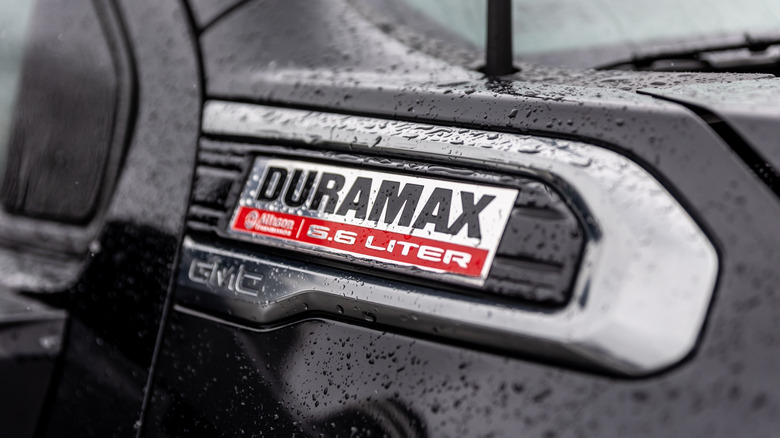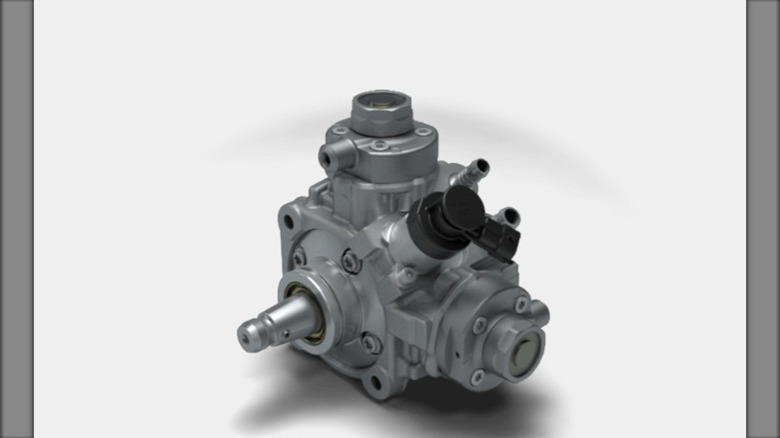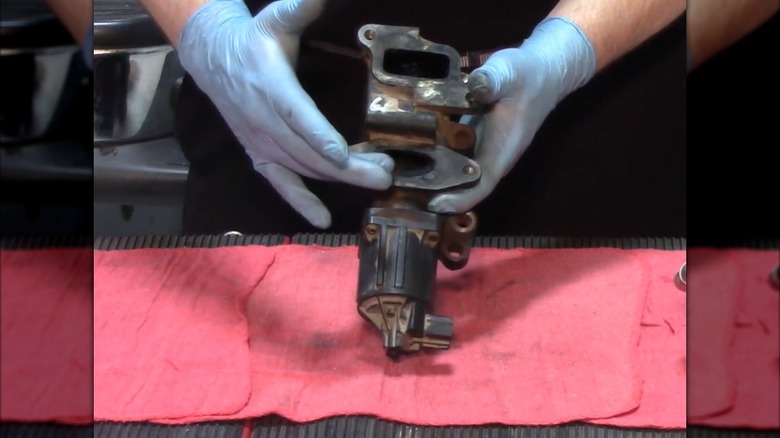Common Problems With The 6.6 Duramax Diesel Engine, According To Owners
In the world of heavy-duty pickups, competition under the hood is fierce, with major brands like Duramax, Cummins, and Powerstroke, making the list of the most reliable diesel engines ever built. In terms of dependable, brute force, you can't go wrong with a Chevy Silverado HD or GMC Sierra HD featuring the impressive 6.6-liter Duramax diesel. Making its debut in 2000, the Duramax LB7 V8 turbodiesel could generate 300 horsepower and 520-pound feet of torque.
However, if you want to know everything about Chevrolet's 6.6L Duramax diesel engine, you should also consider some of the issues owners have widely reported. After all, no engine is perfect, and you might want to weigh the pros and cons of this popular option before deciding on your next heavy-duty truck.
While many aspects of the 6.6-liter Duramax diesel are highly praised, many owners have experienced trouble with the fuel pump and EGR system. These issues have occurred across the GMC Sierra, and Chevy Silverado heavy-duty models, with the most reported issues in 2015. In fact, while examining the most reliable Duramax diesel engines and which to avoid according to owners, the LML version of the 6.6-liter Duramax, which ran from 2011 through 2016, is definitely one to bypass.
Bosch CP4 fuel pump failures
Common Rail diesel fuel systems began appearing around the turn of the 21st century as a means to offer drivers robust output while still meeting evolving emissions standards. This technology relies heavily on a high-pressure pump, which allows for enhanced power and efficiency at pressures up to 2,700 bar. Unfortunately, in the case of the Duramax, the Bosch CP4 fuel pump can become a weak link in the fuel system, creating several problems.
Owners have voiced serious issues like sudden power failure, inability to start the engine, and malfunctions at the fuel pump, which led to much of the fuel system needing repair. One driver recounted that at speeds around 60 miles per hour, their Sierra 2500 engine stopped suddenly, forcing them to coast off the road and away from moving traffic. In an eerily similar account, another owner explained that their engine came to an abrupt halt while traveling 40 miles per hour in traffic. They explained that it was fortunate the engine quit at that moment because they were heading toward the freeway and would have been going much faster had the problem occurred just a few moments later.
Unfortunately, in both cases, not only had the fuel pump failed, but pieces of the component itself had broken off and traveled throughout the fuel system. While some owners were able to qualify for a pump replacement under warranty, others required further repairs due to the pump sending metal through the system, which cost more than $7,000.
Exhaust Gas Recirculation system troubles
Diesel engines have had to incorporate various emissions reduction equipment over the years to help reduce air-polluting NOx gasses. One of these systems, the exhaust gas recirculation (EGR), grabs exhaust gas and puts it back into the engine's intake. When the exhaust is reintroduced, it has the effect of lowering combustion chamber temperatures. If temps are greater than 2,370 degrees, this will help greater quantities of NOx to form. This is done in part with an EGR valve and how it works in a diesel engine.
However, many owners have expressed similar issues, such as rough idling and stalling with their heavy-duty Chevy and GMC trucks. One of the symptoms of a clogged EGR valve is a reduction in engine performance, poor idling behavior, and engine shut-offs. Unfortunately, the EGR valve, among other components, can experience a build-up of carbon, reducing efficiency and output.
One owner stated that their Duramax diesel-powered Silverado was producing smoke and suddenly wouldn't go over 10 miles per hour. However, the issue ceased until around a month later with several short periods of terrible performance and smoke. When he took his truck into the dealership, they explained that the EGR valve had collections of carbon inside it.
Some 6.6-liter Duramax turbodiesel owners have even considered an EGR delete, effectively removing the valve and components that can clog. You can delete a diesel truck, but it's a bad idea for several reasons, including legal ones.


